Aswan
In the city of Aswan, many houses are made up of mud and bricks, just like the one shown below. These materials began being used for house building by the Nabateans over 2.500 years ago. Crazy, right?
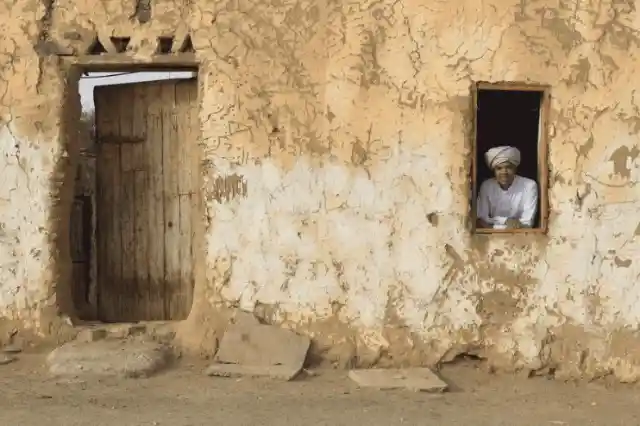
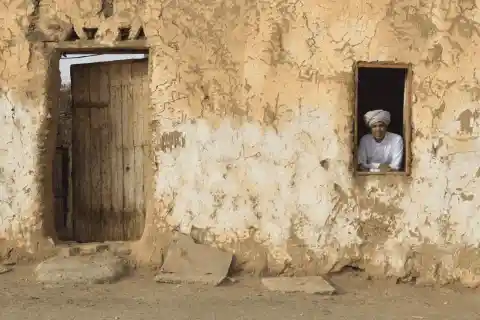
But there is much more to Aswan other than its traditional mud houses. This city is most famous for the Elephantine Island, which is home to the Nubian villages of Siou and Koti. Besides, Aswan is surrounded by beautiful mountains, and it features several amazing archaeological sites, such as the Tomb of the Nobles.
Fokhareen Market
This striking picture was taken in a pottery shop in the street near Fokhareen Market. You’re probably surprised by how young that worker is. Well, the photographer explained that the owner of the workshop couldn’t afford to hire workers nor to send his sons to school, so now they work together making and selling pottery.
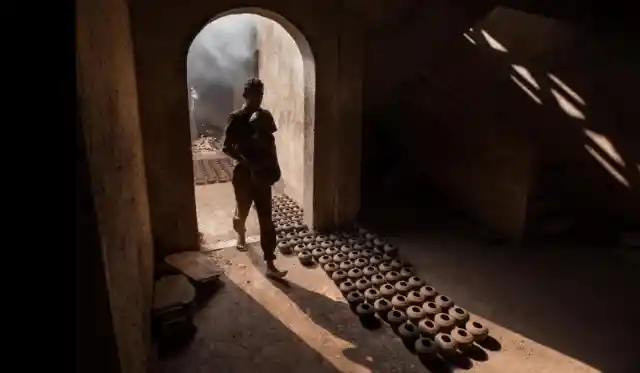
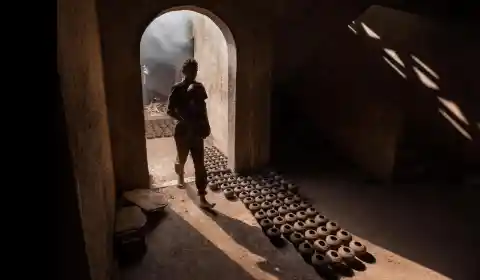
The Fokhareen market is not actually a market in the typical sense. It is basically a road full of street vendors and shops, and it features the most affordable pottery crafts in Cairo. Just a couple of blocks away you have the Fustat Market, where you’ll find all sorts of crafts.
Street Vendors
This colorful picture shows a street vendor struggling with his large bounty of bananas, whose bright yellow color seems to match with the windows of the adjacent building. Aren’t you craving one right now? Besides, they’re probably so cheap!
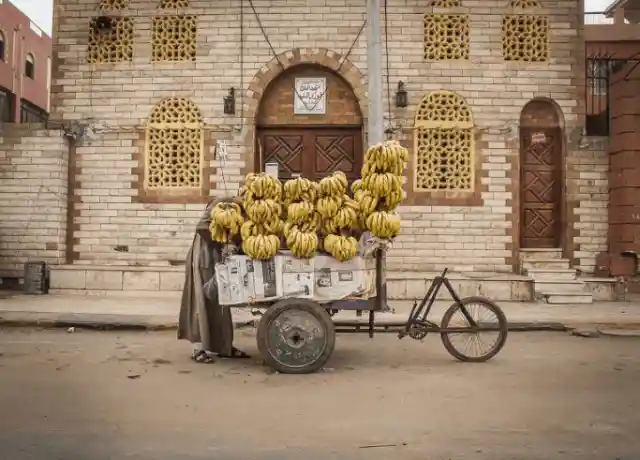
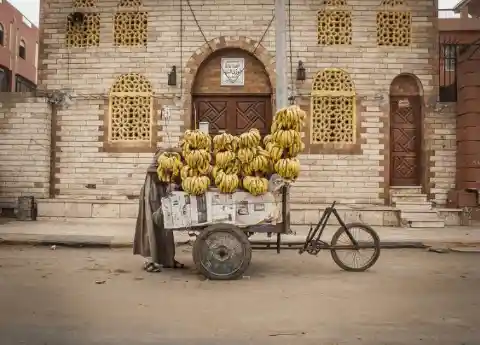
Like most Muslim countries, Egypt is famous for its street markets. If you head towards Mohamid Ali Street, you’ll find dozens of street vendors and shops selling all types of products: fruits, vegetables, incense, jewelry, crafts, and much more!
Al Azhar University
This picture shows a woman getting inside a cab in the streets of Cairo. Behind the cab, you can see the minarets of Al Azhar University. Crazy, right? That beautiful and ancient structure looks like a mosque, but it’s actually one of Egypt’s most prestigious and oldest universities!
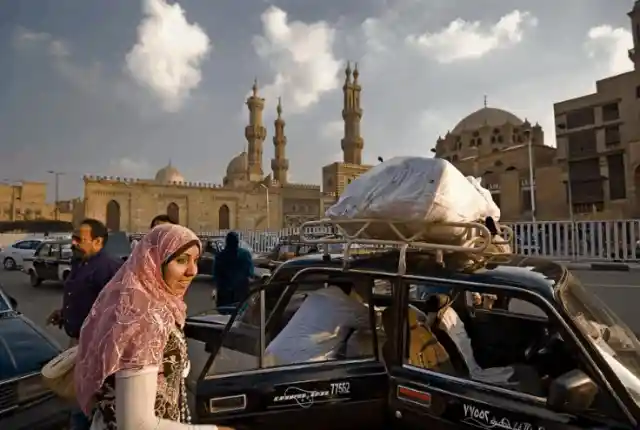
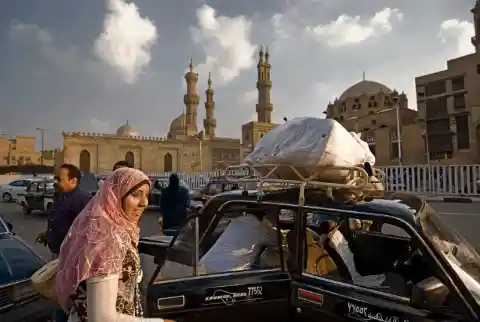
Established by the Fatimids in 970 AD, Al Azhar is Egypt’s oldest degree-granting university. Back then, they taught Islamic law, grammar, rhetoric, and astrology. Nowadays, it’s one of the main centers of Arabic literature and Islamic learning in the whole world.
Egyptian Wedding
This picture was taken during a wedding ceremony in Cairo. It was taken at the right time, at the right moment. Photographer M. Shakweer stated that he took it just when _“the man took his place right in the middle of the frame; almost all eyes looking at him, including the paintings.”_
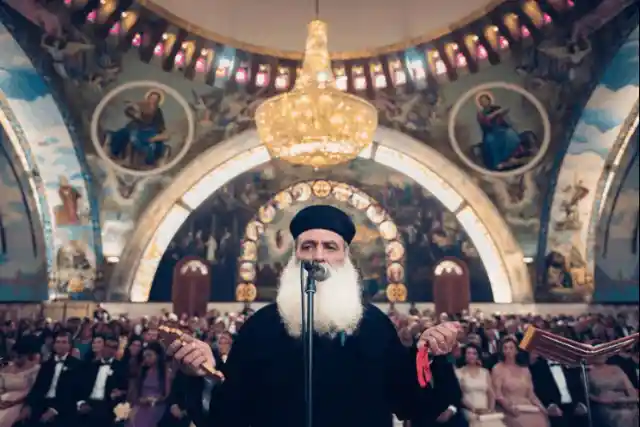

Many of the ancient wedding traditions are still followed today. In fact, in many regions of the country, it is still common for the groom to give a sum of money – called dowry – to the bride-to-be’s family. The traditional wedding ceremonies are called katb el katb, and it is performed in the local mosque by the Maa’zoun.
Eid Al-Adha Feast
This picture features a teenage boy attempting to buy his camels in Khan El Khalili, which happens to be Egypt’s biggest market. However, there’s more to the story. The photographer explained that when the picture was taken, the boy had traveled nearly 400 miles from Qena to Giza just to sell his camels at the Eid al-Adha festival.
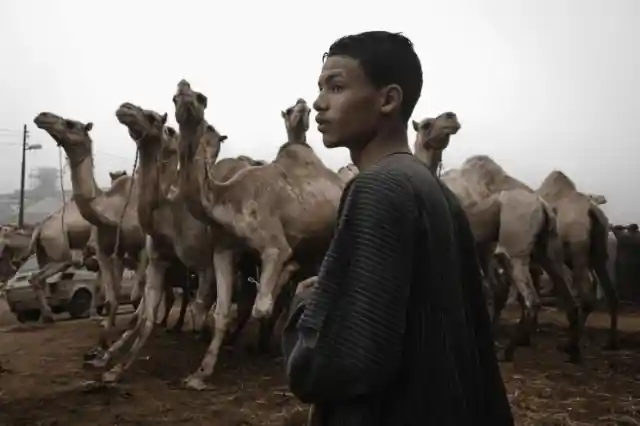
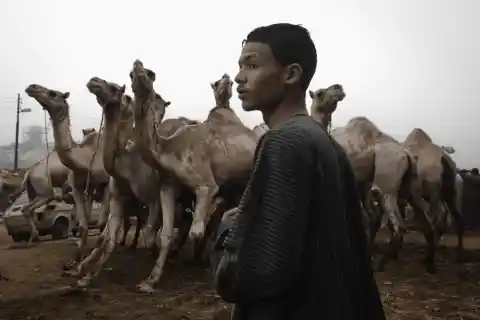
Eid al-Adha is one of the two most important festivals for Muslims. Chanting Eid prayers and distributing meat amongst the people are two key traditions of such festivals. Each year, as you may imagine, Eid al-Adha conglomerates a massive number of people in Cairo.
Al-Azhar Park
This picture is truly striking, not only because of the multicolored sunset but also because of the stunning Saladin Citadel of Cairo. This building is a medieval Islamic fort, and it is one of the country’s UNESCO World Heritage Sites.
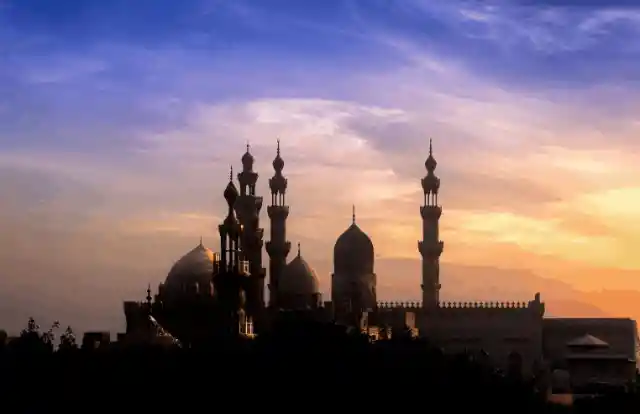
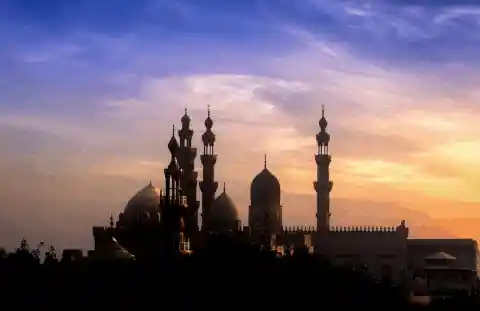
This beautiful structure was built in 1176 AD to protect the city from the European crusaders. Within this giant complex, there are three mosques – including the famous Mosque of Muhammad Ali – and three museums. It is located on the top of Mokattam hill, so it offers a panoramic view of the city.
Cairo Café
This picture was taken in a local Cairo café, and it depicts a group of men playing what seems to be a game of dominoes. Surprisingly, cafés are a big thing in Cairo, and they’re becoming more popular as the decades go by. It’s probably one of the clearest examples of Western influence in the local culture.
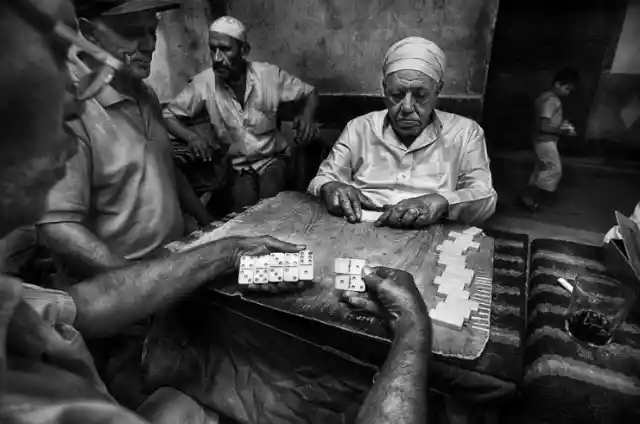
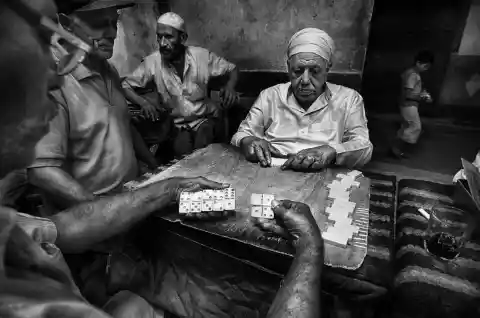
If you ever go to Cairo, Fishawy Cafe Cairo is a place you just can’t miss. It’s the most renowned café in the Arab world, and it’s famous for its mint tea and anise tea. And of course, for its coffees!
Cairo Traffic
Home to nearly 18 million people, Cairo is Africa’s second-largest city. So as you can imagine, overpopulation and traffic are two of the city’s major problems. As a matter of fact, Cairo has been ranked Cairo has ranked the fourth worst city in the world in terms of traffic congestion.
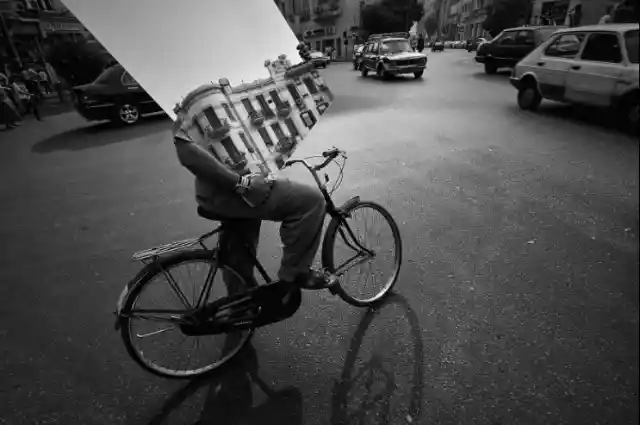
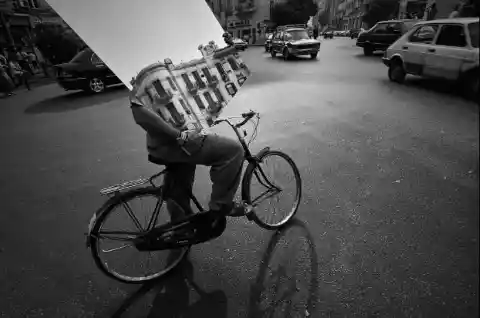
Therefore, Cairo isn’t exactly the friendliest city on Earth when it comes to bike riding. If you ask me, I would rather take public transport rather than rent a bike unless you’re as talented as the man shown in the picture above!
Islamic Cairo
This picture shows two men wearing the traditional galabia as they walk past a bunch of carpets in the streets of Islamic Cairo. Islamic Cairo is a historic part of the city filled with mosques, tombs, fortifications, and madrasas, most of which date from the Islamic Period.
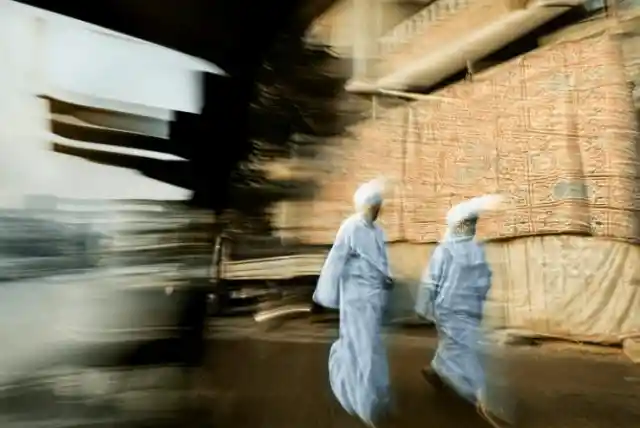
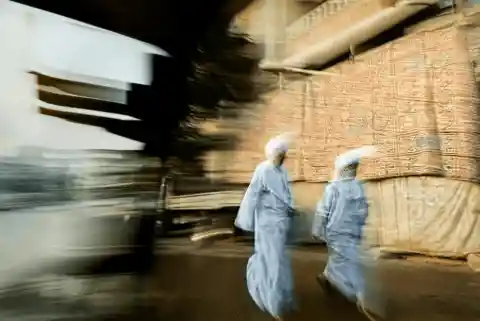
Islamic Cairo is regarded as one of the world’s oldest Islamic cities, and it has been designated a UNESCO World Heritage Site in 1979. Its most notable sites include the Mosque of Ibn Tulun and the Mosque of al-Hakim.
Abu Simbel
This picture shows one of the two rock temples of Abu Simbel at night. These rock temples are located in the Nubian town of Abu Simbel, which lies in north Egypt really close to the border of Sudan. This site is part of the UNESCO Heritage Site known as the “Nubian Monuments”.
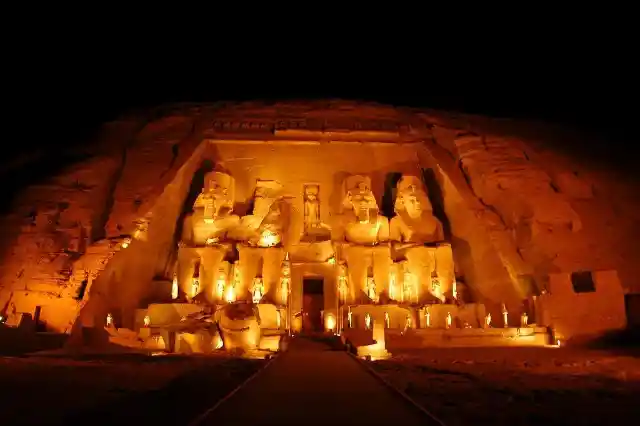
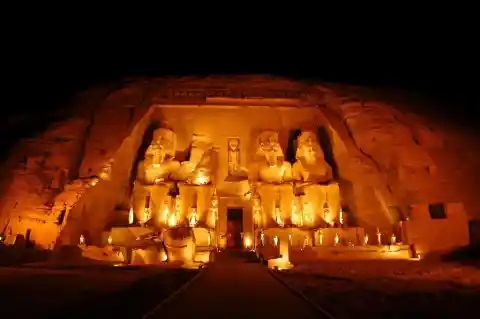
The history of these temples is actually quite interesting. They were carved out of the mountainside in the 13th century BC in honor of Queen Nefertari. But in 1968, the temples had to be relocated due to the creation of Lake Nasser. It turns out that the water of this new lake could potentially submerge the temples. Therefore, these twin structures were relocated to their current location, and they were placed on an artificial hill made from a domed structure.
Giza Pyramids
This picture shows the one and only Giza Pyramids, located in the suburbs of Cairo. This group of three giant pyramids is the oldest and only remaining wonder of the Seven Wonders of the Ancient World. They were built between 2589 BC and 2504 BC.
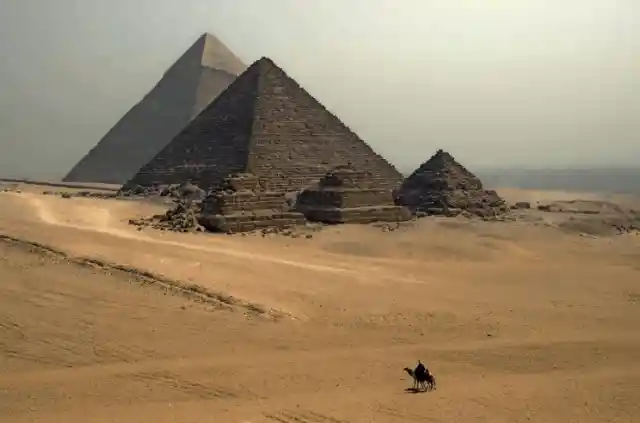
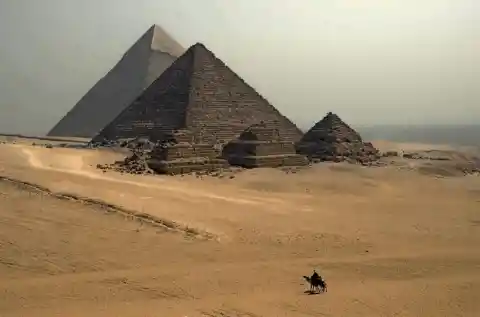
The biggest of the three (the one in the back) is known as The Great Pyramid. As you can imagine, it's the biggest of the three, and it has been built with over two million stone blocks! Historians don’t really understand how they managed to transport this massive amount of stone, but it is thought that over 100,000 people worked in its construction.
Sharm El Sheikh
This picture was taken on the coast of Sharm El Sheikh, a resort town on the south of the Sinai Peninsula. It’s famous for its crystal-clear beaches and luxury resorts. Its coast is home to 250 different coral reefs and over 1.000 species of fish, making it one of Egypt’s main scuba-diving sites.
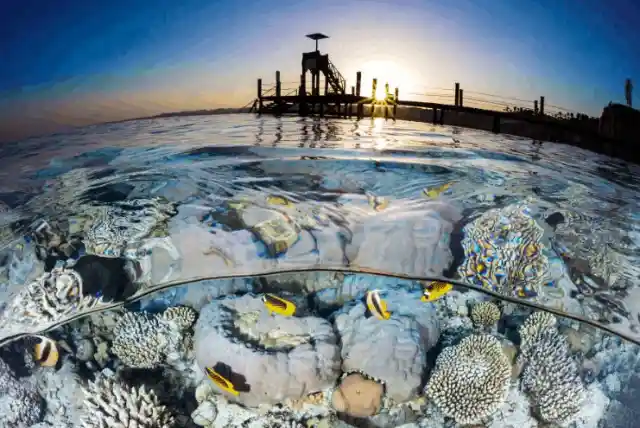
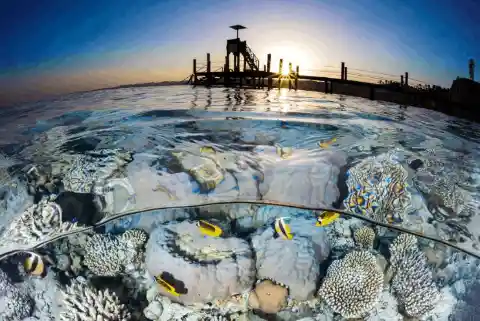
But this doesn’t end here. If you’re a mountain lover, you should know that Sharm El Sheikh is just a two-hour drive from Mount Sinai and Mount Catherine, which are both beautiful and holy sites. Beaches, deserts, mountains… what else do you need?
White Desert
What’s more impressive, the pink and blue sky, the giant moon, or the peculiar rock formation? This amazing picture was taken in Egypt’s White Desert, located 45 km north of the town of Farafra. The desert is filled with strange chalk and rock formations, just like the one shown below.
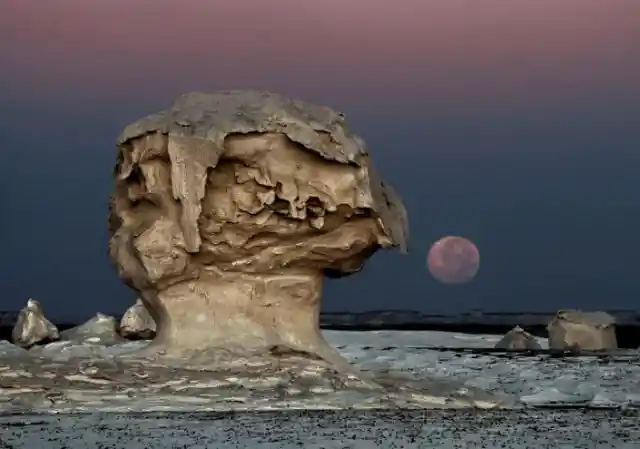
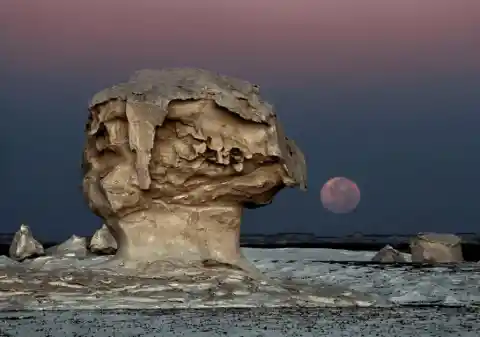
As you can see, these rocks come in quite strange figures, and the reason behind this is that they have been carved by erosion and sandstorms. The White Desert National Park is also home to several species of animals, including the Rhim gazelle, the Barbary sheep, and the sand cats.
Dahab
This picture was taken on the coast of Dahab, a small town on the southeast of the Sinai Peninsula. Two thousand years ago Dahab was a Bedouin fishing village, but today it’s regarded as Sinai’s most spectacular diving destination.
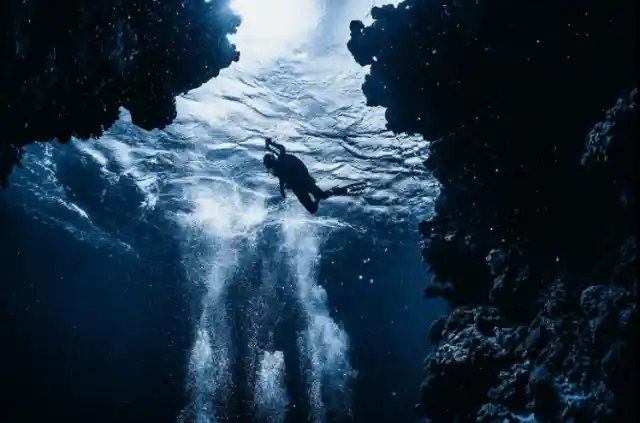
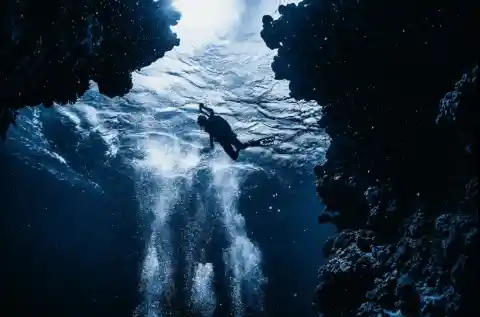
Dahab is located on the coast of the Red Sea, and its surrounded by beautiful reefs, just like the one shown in the picture above. This town is also home to the Blue Hole, a 328-foot deep submarine sinkhole, which is considered as the most dangerous diving site in the world. If you’re not into scuba diving, you should know that Dahab is also a great spot to practice windsurfing, kitesurfing, horse riding, and mountain biking trips.
Western Desert
This spectacular photo shows the silhouette of a woman struggling with her Arabian horse. She’s probably part of one of the Bedouin tribes that live in the Western Desert of Egypt. The Western Desert is an area of the Sahara located west of the Nile River close to the Libyan border.
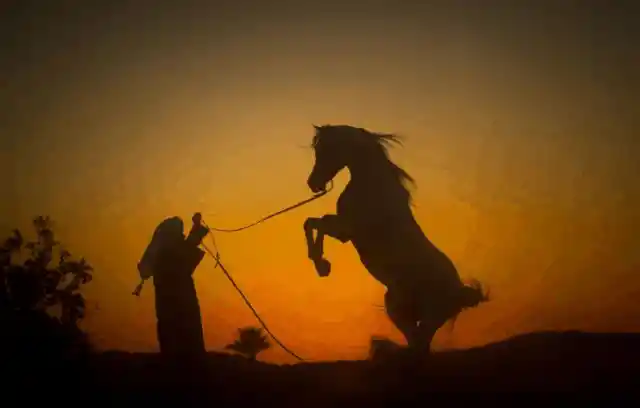
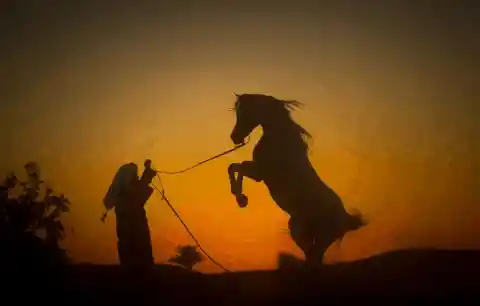
The Western Desert is mostly a rocky desert, but there’s a part of it that’s called the Great Sand Sea and which is naturally made up of sand. One of the major landmarks located in this desert is the Abu Simbel temples built by King Ramses II.
Camels
This picture shows a beautiful white camel with his owner, with the backdrop of the beautiful Giza Pyramids. If you’re up to a bit of adventure, you can book a 2-hour camel ride through the desert at the Giza Pyramids. If you ask me, the best time to do it is at sunset!
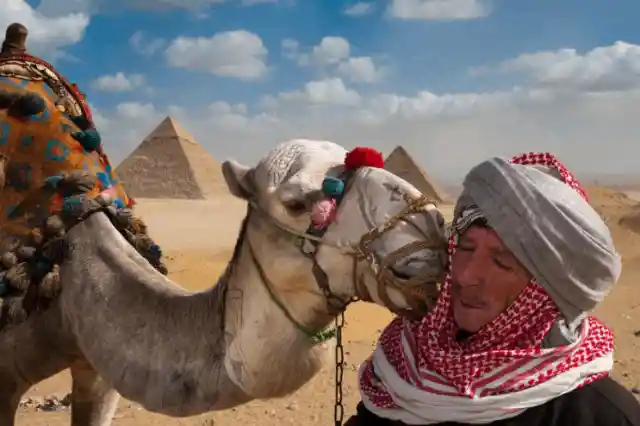
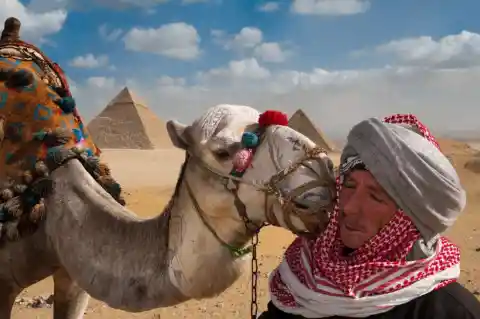
I know what you’re thinking: isn’t that man feeling hot with so many clothes on in the middle of the desert? Well, in winter, it can actually get quite cold in Cairo. And here’s another interesting fact: even though summers in Egypt are unbearably hot, the temperature inside the pyramids often remains at 20 C, which is the average temperature on earth.
Sphynx
This startling photograph shows the iconic Great Sphinx of Giza with the backdrop of the Great Pyramid. It was taken during sunset, and the sky’s dozens of tones of orange make it look like a painting. This structure is a limestone statue of a sphynx, which is a mythical creature that has the body of a lion and the head of a human.
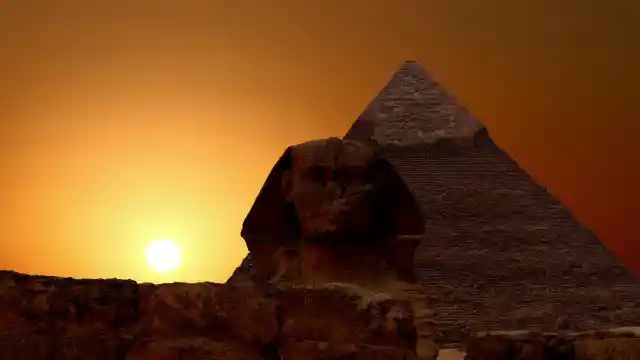
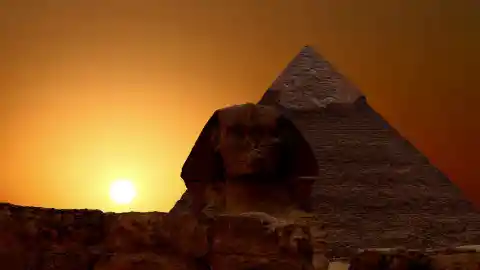
The statue may seem small in the picture, but it is actually 73 meters long and 20 meters tall. It’s the oldest monumental sculpture in Egypt, and it is believed that it was built somewhere between 2558 and 2532 BC.
Sinai Desert
This picture was taken in the Sinai Desert, close to the city of Sharm El Sheik. Apart from the endless sand dunes, you can spot the elongated shades of nine camels, which are either carrying local Beduins or tourists.
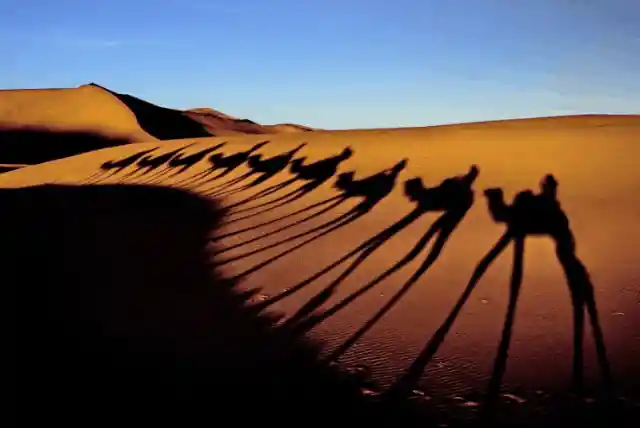
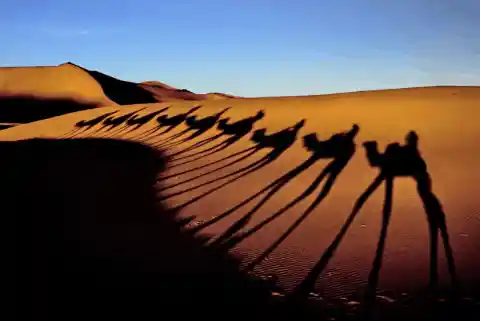
But the Sinai desert is not only sand. On the contrary, it features a wide variety of scenic landscapes, including dunes, sandstone hills, rugged mountains, green oases, and hidden rocky canyons. It also features a couple of archaeological sites from the Pharaonic and Nabatean times.
Dahab And Its Artificial Reefs
Here is another fantastic picture that was taken in the depths of the Red Sea near Dahab. The photo shows a professional diver swimming near an artificial reef shaped like an elephant. What a weird creation, right?
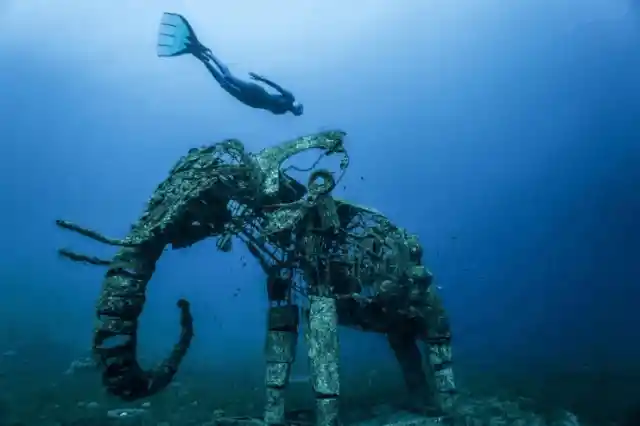
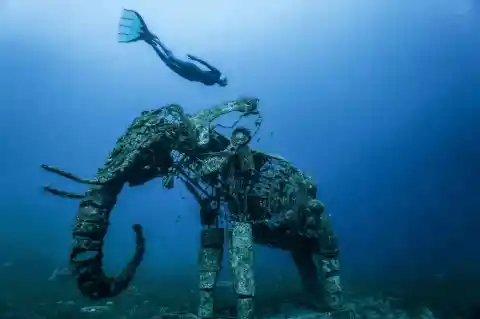
Believe it or not, considering that coral reefs are under threat throughout the whole world, artificial reefs can be extremely beneficial to the marine ecosystem. This elephant is one among many artificial reefs located near Dahab, and hundreds of divers go on diving tours to visit them.
Caves In The Western Desert
As we have seen, the Western Desert is truly massive, and capturing its vastness is no piece of cake. In this picture, photographer Dany Eid decided to focus on the cave, which sort of gives a sense of shelter from the burning sun.
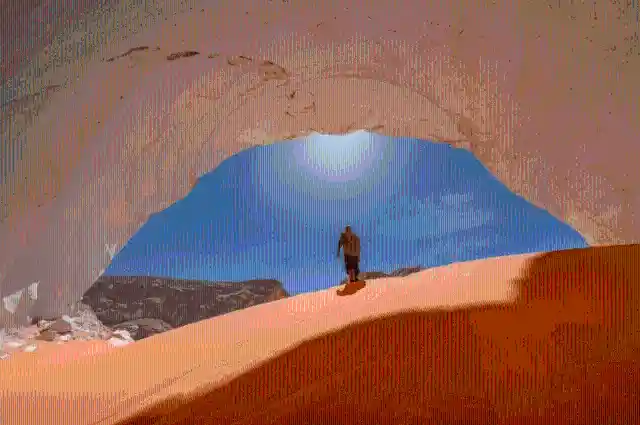
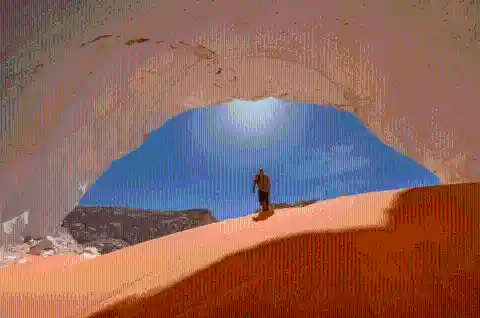
The Western Desert is actually full of caves, many of which are over 7,000 years old. The most famous and visited ones include the Djara Cave, theSannur Cave, and the Foggani Cave. The latter of the three features prehistoric paintings, and it is considered to be the most important rock art site in the whole desert.